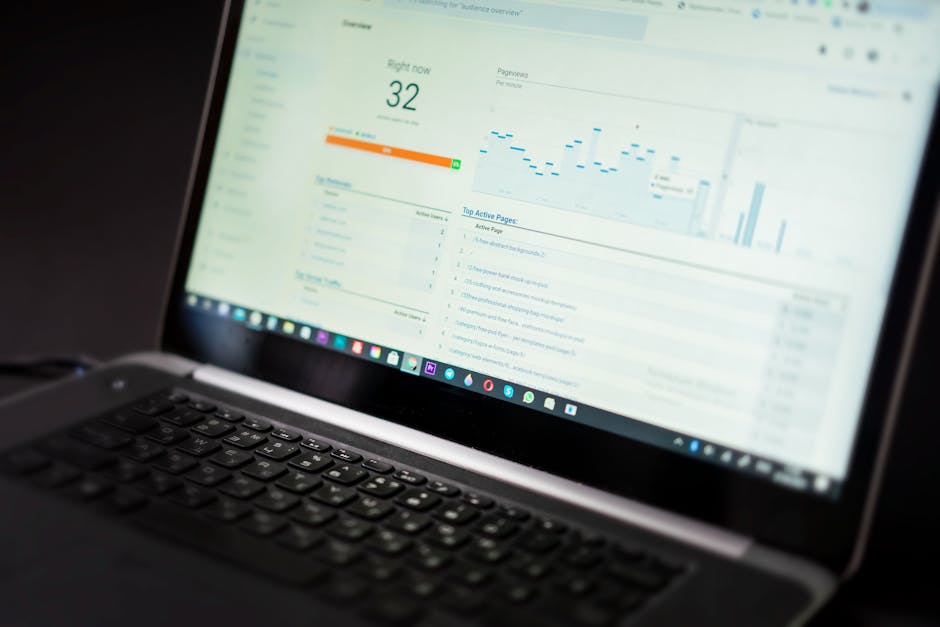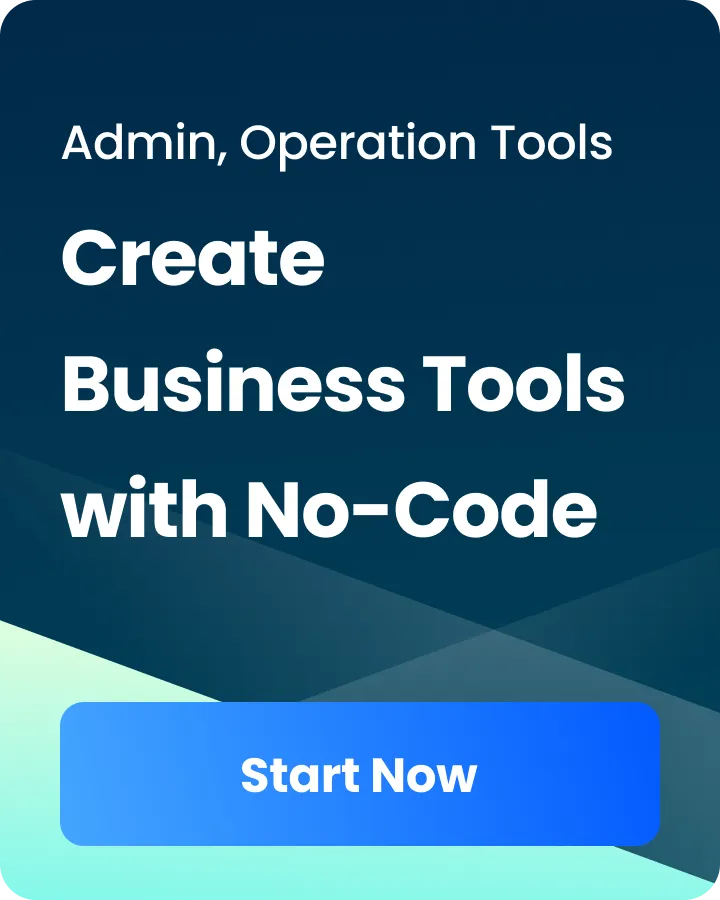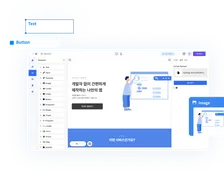Marketing
Build Websites Fast: AI Tools Unleashed
Waveon Team
10/22/2025
0 min read
blogTocHead
Launching a professional website used to be a weeks-long project. Today, an AI website builder for entrepreneurs compresses that timeline into hours—even minutes—without sacrificing quality. With no-code platforms like Waveon, founders, small-business owners, and marketing teams can generate on-brand websites and high-converting landing pages, powered by AI that handles design, content, and optimization behind the scenes. This guide breaks down how these tools work, what features matter most, and how to get from idea to live site fast—while setting yourself up for long-term growth.
Introduction to AI Website Builders
What are AI website builders?
AI website builders are no-code platforms that use artificial intelligence to automate the heavy lifting of web design and development. Instead of hand-coding or wrestling with complex CMS setups, you answer a few questions (your industry, goals, style preferences), and the AI generates a tailored site: structure, layout, copy, images, and basic SEO included. You can then tweak everything in a visual editor—no coding skills required.
What makes AI different from a traditional drag-and-drop builder is the level of automation and intelligence layered into the experience. It doesn’t just offer templates—it creates a draft site that’s aligned with your business goals, audience, and brand tone. Many AI builders also support instant landing page generation, enabling you to launch campaign-specific pages quickly.
To visualize this, look at how a drag-and-drop editor lets you arrange sections without code. The interface keeps your brand styles consistent while you experiment with layouts.
This kind of editor reduces the learning curve and helps you focus on clear messaging and conversion flow.
Key benefits for entrepreneurs
Speed to market: Go from idea to MVP website or landing page in a single working session.
Lower costs: Replace large upfront development fees with an affordable, subscription-based tool.
No code required: Build, edit, and maintain a polished site without engineering support.
Consistent branding: Use AI to maintain your brand voice, color palette, and layout consistency across pages.
Built-in optimization: Get SEO-ready structure, mobile-responsive layouts, and performance optimizations out of the box.
Data-driven improvements: Use integrated analytics and A/B testing to refine content, layouts, and CTAs over time.
Scalability: Add new pages, funnels, and languages as you grow—without complex rework.
Ready to see it in action? Generate a tailored homepage with Waveon in minutes—just describe your industry, goals, and brand voice to get a launch-ready draft.
Why move away from traditional methods?
Time and complexity: Traditional builds involve discovery, design, development, QA, and deployment cycles. AI streamlines all of this.
Opportunity cost: Weeks spent building a website is time not spent on sales, customer interviews, or product refinement.
Maintenance burden: Hardcoded sites can require dev support for updates; AI-driven, no-code platforms let teams move independently.
Modern expectations: Customers expect fast, mobile-friendly, accessible sites. AI builders help meet standards like responsiveness and accessibility from day one.
Understanding Key Features

Automated design and templates
AI website builders analyze your inputs—industry, value proposition, target audience, and brand preferences—to propose:
Site structure: Navigation, page hierarchy, and content sections (hero, features, social proof, FAQs, contact).
Layout patterns: Grids, cards, hero images, and visual hierarchy that reflect your conversion goals.
Brand-aligned visuals: Color palettes, typography pairings, and image styles that match your brand guidelines.
Content drafts: Headlines, body copy, CTAs, and even microcopy that reflect your tone (e.g., friendly, professional, bold).
Conversion assets: Landing pages with offer-specific messaging, forms, and conversion sections optimized for speed and clarity.
Unlike static templates, AI-generated compositions adapt to your goals—lead generation, e-commerce, portfolio, bookings—and can auto-create variants for testing.
Intuitive user interface
The hallmark of a modern AI website builder for entrepreneurs is ease of use:
Drag-and-drop editor: Move, resize, and reorganize content blocks effortlessly.
Section libraries: Prebuilt sections for testimonials, pricing tables, feature grids, and FAQs.
Brand kit: Upload your logo, set your colors and fonts once, and apply them globally.
Global styles and components: Update a component (e.g., header, footer, CTA) in one place and sync everywhere.
Responsive controls: Preview and fine-tune desktop, tablet, and mobile views.
Collaboration: Commenting, roles/permissions, and version history for teams.
These features help non-technical teams maintain professional web standards without the learning curve of traditional design tools.
Integrated SEO tools
Search matters—especially for early-stage growth. Look for AI builders with:
On-page controls: Editable titles, meta descriptions, alt text, and open graph tags.
Structured data: Schema markup for products, reviews, FAQs, and local business information.
Technical underpinnings: Clean HTML, optimized images, lazy loading, and performance best practices for Core Web Vitals.
Sitemaps and indexing: Auto-generated sitemaps and robots management for smooth search engine discovery.
Content guidance: AI-driven suggestions for keywords, headings, and internal links.
Local SEO support: Business hours, map embeds, NAP consistency, and local schema for service-area pages.
These SEO foundations reduce the need for plugins or dev work—and set you up for sustainable organic growth.
How AI Streamlines Website Creation
Step-by-step process for building a site
Use this practical flow to launch your site rapidly with a platform like Waveon:
Before you click Generate, map your core pages and conversion paths at a high level. A quick whiteboard sitemap keeps the build focused.
With this outline, the AI’s draft aligns to your goals and structure, minimizing rework.
Define your goal
Clarify the primary objective: capture leads, sell products, book appointments, showcase a portfolio, or validate an idea.
Identify the audience segment and the specific problem you solve.
Set up your brand kit
Upload logo, select colors and typography, define brand voice.
Import brand assets (icons, image styles) to help the AI generate on-brand sections.
Start with a prompt
Describe your business, target market, key benefits, and desired pages.
Include messaging cues (formal vs. friendly tone) and a short positioning statement.
Generate a draft site
Let the AI propose a homepage, service/product pages, and a contact/booking flow.
Generate a landing page variation focused on a specific offer or campaign.
Review structure and sections
Confirm navigation, sections, and conversion paths (CTA placement, forms, checkout).
Ensure accessibility basics: readable contrasts, clear link styles, keyboard navigation.
Refine content and visuals
Use AI to iterate on headlines, feature bullets, and hero copy; inject your voice and proof points.
Replace generic stock images with AI-assisted visuals or brand photography where possible.
Configure SEO settings
Edit meta titles, descriptions, and H1/H2 headings; add alt text to images.
Enable structured data (e.g., FAQ, Product) to enhance search snippets.
Connect domain and deploy
Map your custom domain; verify SSL is active for security and SEO.
Auto-generate sitemap and submit to search engines if supported.
Set up analytics and tracking
Connect GA4, Search Console, and pixels (Meta, LinkedIn, TikTok).
Define conversion events (form submits, bookings, purchases).
Launch and iterate
Run A/B tests on hero headline, CTA copy, and section order.
Use heatmaps or scroll-depth analytics to improve engagement.
Pro tip: Launch a focused landing page first while your full site evolves. A strong campaign page can start generating leads immediately.
Traditional vs AI: At‑a‑glance comparison
Criteria | Traditional agency/developer build | AI builder (Waveon) |
|---|---|---|
Time to MVP | 3–8 weeks | 1–8 hours |
Upfront cost | $3k–$25k+ | $0–$99/month subscription |
Iteration speed | Days–weeks per change | Minutes with in-editor AI |
Required skills | Design, development, SEO | No-code; brand inputs and content |
SEO/performance | Varies by implementation | Built-in best practices and Core Web Vitals focus |
A/B testing | Often external tools, manual setup | Built-in variants and experiments |
Maintenance | Ongoing dev hours, tickets | Self-serve updates; global styles/components |
Scalability | New pages require design/dev cycles | Duplicate/adapt pages and sections in minutes |
Ownership/control | Dependent on vendor bandwidth | Teams ship independently with guardrails |
Run your own test: start a Waveon project, time your build from prompt to publish, and compare it to your current workflow.
Time-saving tips with AI
Start from proven patterns: Use prebuilt funnels for lead magnets, webinars, and product launches.
Repurpose content: Import a pitch deck or brochure and let AI convert it into web sections.
Instant variants: Generate multiple headline/hero variants and test them quickly.
Bulk page creation: Duplicate and adapt service or location pages while maintaining consistent structure.
Smart forms: Use conditional logic or prefilled fields to reduce friction.
AI image support: Use AI to suggest on-brand imagery, remove backgrounds, or auto-crop for consistency.
Content blocks library: Save frequently used blocks (testimonials, CTAs) and reuse across pages.
Not sure where to start? Launch a focused campaign page in Waveon today and iterate with instant AI variants to find your winning message faster.
Watch this quick no-code website builder tutorial to see how to go from prompt to polished page, including setting up a brand kit, generating sections, and publishing fast.
Use the same flow in Waveon to mirror the steps outlined above and accelerate your first launch.
Common challenges and solutions
Challenge: Generic, “template-y” look
Solution: Apply your brand kit, swap stock photos for brand imagery, and customize layout details (spacing, iconography). Add unique proof like case studies, partner logos, and process visuals.
Challenge: Migrating from an existing site
Solution: Map old URLs to new ones, set 301 redirects, and import content into structured sections. Use AI to refresh copy while preserving keyword themes and intent.
Challenge: SEO worries
Solution: Ensure each page has a unique title/meta description, use proper headings (H1-H3), add internal links, and implement schema. Monitor Search Console for coverage and Core Web Vitals.
Challenge: Domain and DNS setup
Solution: Follow platform DNS instructions precisely (A records, CNAME). Verify SSL activation and HTTP to HTTPS redirects.
Challenge: Accessibility and compliance
Solution: Use sufficient color contrast, alt text for images, keyboard navigability, and descriptive link labels. Add cookie consent and privacy pages for GDPR/CCPA as needed.
Challenge: Keeping content fresh
Solution: Set a monthly cadence for updates. Use AI to propose blog topics, refresh pages, and generate seasonal landing pages quickly.
Maximizing Your Website’s Potential
Enhancing user experience
Great UX increases trust, engagement, and conversions. Focus on these essentials:
A mobile-first review ensures your layout works where most traffic happens.
Testing on real devices early helps catch spacing, tap targets, and readability issues before launch.
Clear hierarchy: Use descriptive headings, concise sections, and strong subheadings that guide scanning.
Hero clarity: Communicate your value proposition above the fold with a single, unambiguous CTA.
Visual consistency: Maintain consistent spacing, button styles, and icon sets; leverage your brand kit.
Mobile-first design: Prioritize thumb-friendly buttons, readable text, and simplified navigation on mobile.
Fast load times: Compress images, lazy-load media, and minimize heavy scripts to pass Core Web Vitals.
Social proof: Place testimonials, ratings, and logos near decision points (pricing, signup forms).
Frictionless forms: Keep fields minimal, provide inline validation, and explain why you need each input.
Accessibility: Write descriptive alt text, avoid color-only indicators, and ensure proper focus states.
UX checklist:
Does the above-the-fold area answer who you are, what you do, and for whom?
Is the primary CTA visible without scrolling and repeated logically?
Are key objections addressed near CTAs (e.g., guarantees, security, support)?
Can users complete the main task in 3 clicks or fewer?
Optimizing for search engines
Make every page search-ready from day one:
Keyword strategy
Identify primary keywords for each page and related semantic phrases.
Match content to intent (informational, transactional, local).
On-page SEO
One H1 per page; use H2/H3 to structure content logically.
Write compelling, unique meta titles/descriptions to drive clicks.
Include descriptive alt text for images and sensible file names.
Implement internal links to related pages; use descriptive anchor text.
Technical SEO
Ensure fast performance and mobile responsiveness.
Generate and submit XML sitemaps; keep robots.txt clean.
Add schema markup (Organization, Product, FAQ, LocalBusiness) where relevant.
Maintain clean URL structures; avoid query-string heavy URLs for core pages.
Content marketing
Publish helpful, audience-focused content regularly (how-tos, comparisons, case studies).
Use AI to draft outlines and first passes; add your expertise and examples.
Repurpose: turn blog posts into landing pages, email sequences, and social snippets.
Local SEO (for service businesses)
Optimize Google Business Profile, ensure NAP consistency, gather reviews.
Create location pages with unique content and local schema.
A note on E-E-A-T:
Showcase expertise: author bios, credentials, and transparent company info.
Provide evidence: data, customer stories, and clear sourcing where appropriate.
Keep policies visible: privacy, terms, refund, and support information.
This on-page SEO tutorial walks through keyword mapping, writing titles and meta descriptions, structuring headings, and adding schema so your pages rank and earn clicks.
Apply these practices inside Waveon’s SEO settings to ensure each page ships search-ready.
Using data analytics to improve
Data closes the loop between launch and growth:
Dashboards make it easy to spot trends, winning pages, and search queries fueling growth.
Use these insights to prioritize A/B tests and content updates that move the needle.
Set up measurement
Connect GA4 for site-wide analytics; define conversions (lead, purchase, booking).
Add pixels for ad platforms to enable retargeting and lookalike audiences.
Connect Search Console to monitor indexing, queries, and CTRs.
Behavior insights
Use heatmaps to identify friction: ignored sections, dead clicks, or confusing elements.
Analyze scroll depth to prioritize above-the-fold content and CTAs.
Experimentation
A/B test headlines, hero imagery, CTA copy, form length, and pricing table design.
Start with high-impact tests (hero, CTA) before fine-tuning smaller elements.
Funnel analysis
Map the journey from landing page to form submit or checkout; track drop-off points.
Use cohorts to understand retention and the impact of content updates or offers.
Reporting cadence
Weekly: performance snapshot (traffic, conversions, top pages, top queries).
Monthly: deeper analysis (test results, content performance, SEO gains).
Quarterly: strategic plan (new pages, campaigns, and site improvements).
Privacy and compliance:
Deploy consent management for cookies and tracking where required.
Offer clear opt-ins and honor user preferences.
Maintain a data retention policy and update your privacy notice regularly.
Case Studies: Success Stories
Real-world teams use AI website builders to move fast, reduce costs, and improve outcomes. Below are composite scenarios inspired by common patterns we see among small businesses and startups using no-code AI platforms like Waveon.
Small business transformation

Background:
A neighborhood fitness studio needed a modern site with class schedules, trainer bios, and online bookings. Their prior site was slow, non-responsive, and difficult to update.
Approach:
The owner used an AI website builder for entrepreneurs to generate a fresh, mobile-first homepage and a bookings-focused landing page.
They imported the studio’s brand kit (logo, colors, photography) and let AI draft new copy focused on outcomes (energy, community, accountability).
The platform integrated scheduling forms and calendar sync, reducing manual coordination.
Results:
Launch in one weekend, compared to the month estimated by an agency.
A clearer value proposition boosted trial signups.
The team now updates class schedules and promotions without developer help.
What made the difference:
Mobile-optimized layouts for on-the-go browsing.
Simplified, one-step booking form.
Testimonials placed near pricing and schedule sections.
E-commerce growth

Background:
A direct-to-consumer apparel startup wanted to launch a capsule product line and validate demand quickly before scaling inventory.
Approach:
The founder used AI to build a product-focused landing page with variant selection, size guides, and UGC-style images.
AI generated multiple hero copy variants, which they A/B tested (value-focused vs. style-focused messaging).
Structured data for Product was added to enable rich results, and a lightweight checkout reduced steps to purchase.
Results:
Faster launch enabled two extra weeks of pre-orders.
The winning headline variant improved conversion rate.
Search visibility for product queries increased due to clean markup and speed.
What made the difference:
Clear, above-the-fold value proposition with social proof.
Frictionless checkout and free-shipping banner near the CTA.
AI-assisted imagery and consistent brand kit application.
Service industry adaptations
Background:
A B2B IT services firm needed niche service pages (cloud migration, security audits, managed support) targeting different verticals (healthcare, finance, manufacturing).
Approach:
The marketing lead used AI to generate a set of service pages with industry-specific pain points and compliance references.
Each page included FAQs, a downloadable checklist lead magnet, and case study snippets.
Internal linking and schema (FAQ, Organization) improved SERP presentation and user navigation.
Results:
Increased qualified leads as pages resonated with vertical-specific needs.
Better engagement due to relevant FAQs and resources.
More efficient page production: one afternoon to produce multiple high-quality pages.
What made the difference:
Focused messaging per industry segment.
Helpful resources offering immediate value in exchange for contact details.
Clean URL structure and on-page SEO fundamentals applied consistently.
Bringing It All Together With Waveon
Waveon is an AI Website Builder and Landing Page Generator designed to help entrepreneurs and small teams move faster with confidence. As a no-code platform, it combines AI-assisted content and layout generation with a visual editor, making it simple to:
Launch brand-aligned websites and campaign landing pages quickly.
Maintain consistent design via a brand kit, reusable components, and global styles.
Optimize for search with integrated on-page SEO controls and structured data.
Improve conversions through built-in analytics, A/B testing, and performance tooling.
If you’re seeking an AI website builder for entrepreneurs that balances speed, control, and growth potential, prioritize platforms that streamline your workflow end-to-end—from first prompt to continuous optimization.
Quick Action Plan
Define your primary goal: leads, sales, bookings, or validation.
Prepare a lightweight brand kit: logo, colors, fonts, voice notes.
Draft your business prompt: audience, pain points, outcomes, and differentiators.
Generate your site and one focused landing page.
Polish hero messaging and conversion blocks; add proof.
Configure SEO basics and connect analytics.
Launch, then iterate weekly with AI-assisted tests and updates.
Final Thoughts
AI website builders have changed the playbook for founders, marketers, and small-business owners. You no longer need to choose between speed and quality—or between design and performance. With a smart, no-code platform like Waveon, you can ship fast, learn from real user data, and continuously refine your site to meet your goals. Start with a clear objective, lean on AI for the heavy lifting, and keep iterating. Your best website is the one that launches soonest—and improves every week.
Build with Waveon today—generate, publish, and start optimizing in the same afternoon.
Conclusion
AI-powered, no-code builders make modern websites and landing pages accessible to every team. The core advantages are clear:
Speed and affordability: Launch in hours, not weeks, on a predictable subscription.
Quality by default: Brand-aligned layouts, clean performance, and SEO foundations built in.
Continuous improvement: Integrated analytics, A/B testing, and AI-assisted iterations keep results compounding.
Scalability without complexity: Duplicate, adapt, and localize pages as you grow—no engineering bottlenecks.
Use the step-by-step flow in this guide to move from prompt to publish, apply UX and SEO best practices from day one, and let data drive ongoing optimization. With Waveon, you can confidently ship a polished, high-converting web presence faster than ever—and keep improving it with every insight.












